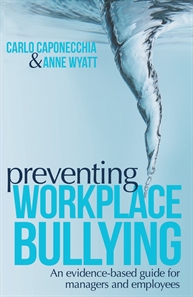Mean Business
The cost of workplace bullying | March 8, 2011
Bullying has recently been in the news here in Sydney regarding the costs that it can have through compensation payouts.
In the education sector, about $2.5million has been paid in compensation for workplace bullying over the last three years. You can read the full article, from The Daily Telegraph, Feb 1, 2011, here.
The article demonstrates how not preventing workplace bulling, (that is, not doing something about it before it gets to a point where someone has a case for compensation) can be extremely costly. What the article doesn’t show is the costs that these kinds of behaviours have on the targets involved. However, sometimes cold hard dollar costs are necessary to provoke action.
The good thing to note from the article is that the education department is talking about bullying as a psychological hazard, and in terms of their risk management system. Not so long ago the problem would never have been discussed within this approach. So it’s a positive step forward for proactive, systemic and documented systems. But it’s implicit in the whole notion of a risk management framework that the system is continually improved, audited, and evaluated.
A few cautions spring to mind also. Now that we have data on the costs of bullying in Education, it is tempting to think that Education is a bit of a “hot-spot” for these kinds of behaviours. That may in fact be the case. But we shouldn’t only focus on education: bullying might be perceived to be a major problem in education because its one of the (few) places that we’ve looked at in depth. Other examples would be emergency services and health. The reality is that bullying can occur anywhere that people work together.
Secondly, these kinds of figures can lead to some mis-interpretations about prevalence. Data on compensation costs are not indicators of how wide-spread a problem is. Compensation data is just compensation data: the number of successful claims within a particular time period. So for every compensated case, there may be several other cases that do not meet the criteria for compensation; fail to proceed to a compensation claim; or are never reported, for whatever reason. There may be cases that are less severe in nature (but still “true” cases), or cases where the target simply leaves the organisation. I’m not interested in inflating measures of the prevalence of bullying, but we need to remember that compensation data, when used as an index of prevalence, underestimates it. So it probably shouldn’t be used to index prevalence at all.
1 Comment »


It appears to me that the issue of workplace bullying and associated inappropriate behaviours is not taken as seriously as it should be, because of variances in data collection methodologies. As indicated in your book, there is a difference between bullying and harassment and whilst some organisations and individuals maintain that there is no difference, a data collection model or framework that allows benchmarking across the public and private sector is a long way off. Understanding the true cost of bullying or harassment and the like relies heavily on compensation claims as you point out. How then does an organisation gather data that can be used to identity the direct or indirect costs, the proactive/preventive costs or the reactive costs? I suspect that if one were to sit down and conduct a paper based audit of a workplace claim, it would be possible to identify several costs not previously identified. It is also possible that an ‘organisation’ might think the costs only start accruing when a claim is lodged through to when it is finalised. However, my experience suggests that some individuals will think about a course of action for some time before they do something positive. At the same time, there can be drawn out cases where and individual manages to negotiate a monthly insurance payout for a period of five years. Add this to the two years that it had taken to get to the negotiation point and that is seven years. How long is a piece of string would be the question? What is the starting point and the cut off point? Take the case of two former apprentices who in the 80’s were strung up by the hands whilst his workmates went to attack a ‘gay’ co-worker. One former apprentice still has flashbacks. It is a bit more complex than just placing reliance on compensation data to determine whether or not there is a problem.
Comment by Bernie Althofer - Author - Resolving Workplace Bullying — April 8, 2011 @ 12:48 pm